News
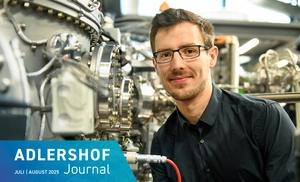
A head full of numbers and physics in the heart
Memory athlete Konstantin Skudler on an unusual path between memory palaces and formal logic:
How is it possible to memorise hundreds of numbers in a matter of minutes? And why do emotions help more than sheer discipline? Physicist and memory athlete Konstantin Skudler shares an unusual path between memory…
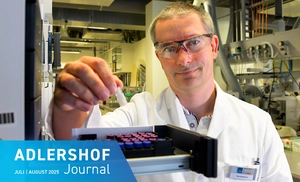
Hormones, steroids and more
Protein drinks and dietary supplements are in the focus of Landeslabor Berlin-Brandenburg:
Landeslabor Berlin-Brandenburg, the region’s state laboratory, is engaged in regular testing of protein drinks and dietary supplements as part of the German government’s official food control. Inspectors are on the…
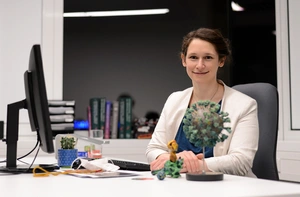
New department at HZB: ‘AI and Biomolecular Structures’
Andrea Thorn, head of the department, brings many years of experience in AI-based tools for structural biology:
Since 1 July 2025, Dr. Andrea Thorn has been setting up the new AI and Biomolecular Structures department at HZB. A biophysicist with many years of experience in AI-based tools for structural biology, she is looking…
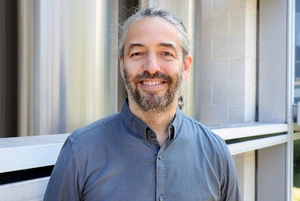
FBH and HU strengthen cooperation in quantum technologies
Another Joint Lab launched / New professorship for Integrated Quantum Sensors:
With the new Joint Lab Integrated Nonlinear Quantum Optics, the Ferdinand-Braun-Institut (FBH) and Humboldt-Universität zu Berlin are strengthening their strategic partnership in the emerging field of quantum…
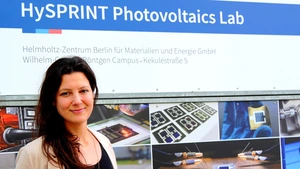
New Helmholtz Young Investigator Group at HZB on perovskite solar cells
Silvia Mariotti aims to advance the development of multi-junction solar cells made from different perovskite layers:
Silvia Mariotti starts building up the new Helmholtz Young Investigator Group ‘Perovskite-based multi-junction solar cells’. The perovskite expert, who was previously based at Okinawa University in Japan, aims to…
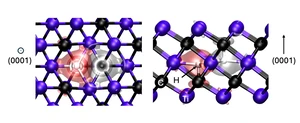
Diffusion of hydrogen in MXene investigated at HZB
Modelling offers a solid foundation for further research with MXene as hydrogen storage systems:
Two-dimensional (2D) materials such as MXene are of great interest for hydrogen storage. An expert from HZB has investigated the diffusion of hydrogen in MXene using density functional theory. This modelling provides…

4-Inch Aluminum Nitride Crystals for Future Markets in Power Electronics and UV Photonics
Innovation project launched by IKZ, PVA TePla AG and Siltronic AG:
Three leading players in semiconductor research and development – the Leibniz-Institut für Kristallzüchtung (IKZ), the PVA TePla AG, and the Siltronic AG – are combining their expertise in a pioneering project to…
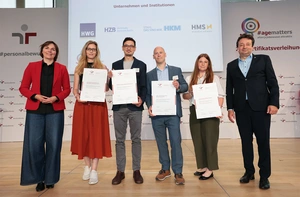
HZB receives certificate for the ‘berufundfamilie’ audit
The research institute was awarded for compatibility and a family-friendly corporate culture:
On 17 June 2025, the certificates for the ‘berufundfamilie’ audit were awarded in Berlin. HZB received an award with distinction for its long-standing efforts to promote a work environment that supports work-life…

HZB and National University Kyiv-Mohyla Academy start cooperation
Memorandum of Understanding signed for collaborative research, academic exchange, and capacity-building in energy and climate:
Helmholtz-Zentrum Berlin für Materialien und Energie GmbH (HZB) and the National University of “Kyiv-Mohyla Academy” (NaUKMA) have signed a Memorandum of Understanding (MoU). The MoU serves as the starting point for…
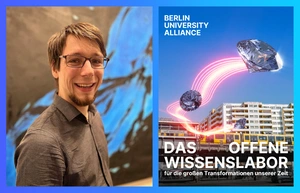
Marco Stucki wins Berlin University Alliance ideas competition
His quantum research project ‘Sawfish Cavity’ is now being used for a poster campaign in Berlin:
Marco Stucki has won the Berlin University Alliance's open knowledge lab competition with a novel process for manufacturing tiny diamond structures for quantum technologies. “Art meets Science” was the motto under…
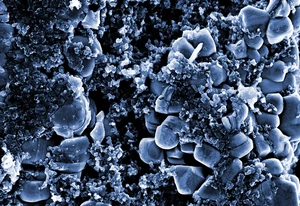
BAM investigates nanomaterials in lithium-ion batteries
Possible risks during production, use and disposal should be assessed more reliably:
The Federal Institute for Materials Research and Testing (BAM) is working with partners from Italy and France to investigate the safety of nanomaterials in lithium-ion batteries (LIBs). The aim is to develop reliable…
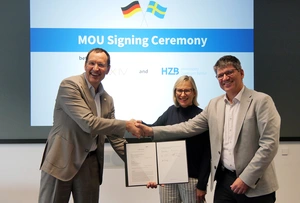
MAX IV and BESSY II initiate new collaboration to advance materials science
Helmholtz-Zentrum Berlin signed a 5-year cooperation agreement with the Swedish national synchrotron laboratory MAX IV:
Swedish national synchrotron laboratory MAX IV and Helmholtz-Zentrum Berlin (HZB) with BESSY II light source jointly announce the signing of a 5-year Cooperation Agreement. The new agreement establishes a framework to…
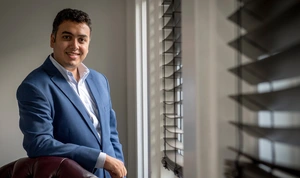
Michael Naguib is visiting HZB as a Humboldt Research Awardee
The US scientist received funding to research novel nanomaterials for energy and environmental applications:
Professor Michael Naguib, from Tulane University in the USA, is one of the discoverers of a new class of 2D materials: MXenes are characterised by a puff pastry-like structure and have many applications, such as in…
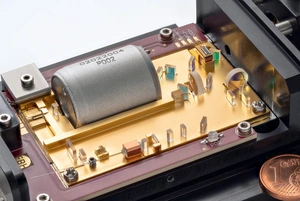
From laser chips to complete systems – FBH at Laser World of Photonics
Ferdinand-Braun-Institut demonstrates its comprehensive expertise in the field of diode lasers / More than 20 presentations at the accompanying CLEO Europe conference:
Once again, the Ferdinand-Braun-Institut, Leibniz-Institut für Höchstfrequenztechnik (FBH) will be presenting its comprehensive range of photonics expertise and solutions at Laser World of Photonics in Munich from…
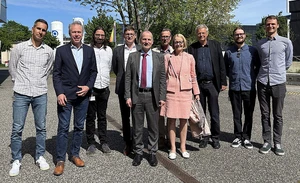
Parts for ESA's NewAthena X-ray telescope are produced in Adlershof
Agreement on the production of mirror modules in the PTB laboratory at BESSY II:
For more than 30 years, there have been cooperation agreements between PTB and the European Space Agency (ESA) on the use of synchrotron radiation for the characterisation of detectors, filters and mirrors for X-ray…
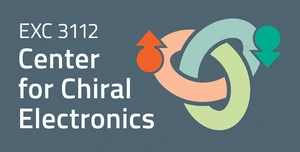
New cluster of excellence with MBI participation approved
The aim of the “Center for Chiral Electronics” is to harness chiral properties in solids and molecules:
The Center for Chiral Electronics is one of the 25 new clusters of excellence approved in May 2025 as part of the Excellence Strategy of the German federal and state governments. The successful initiative was…

TH Wildau and Helmholtz Zentrum Berlin signed comprehensive cooperation
The aim is to strengthen research and teaching in key technologies:
On 21 May 2025, the Technical University of Applied Sciences Wildau (TH Wildau) and the Helmholtz-Zentrum Berlin für Materialien und Energie (HZB), signed a comprehensive cooperation agreement. The aim is to further…
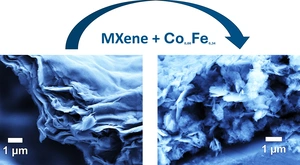
MXenes boost the effectiveness of catalysts for the production of green hydrogen
HZB team shows a new way to highly efficient and inexpensive catalysts:
MXenes are adept at hosting catalytically active particles. This property can be exploited to create more potent catalyst materials that significantly accelerate and enhance the oxygen evolution reaction, which is one…

Joint Berlin Data & AI Center planned
Declaration of intent signed by Helmholtz-Zentrum Berlin, Max Delbrück Center, Berlin University Alliance, and Zuse Institute Berlin:
Data-driven research is crucial for tackling societal challenges – whether in health, materials, or climate research. In a collaboration that is so far unique, Berlin University Alliance (BUA), the Max Delbrück…
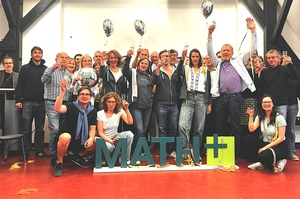
Cluster of Excellence MATH+ to receive funding for another seven years
Berlin mathematics application successful in the Excellence Strategy of the federal and state governments:
A major success for Berlin’s mathematics community: The MATH+ Cluster of Excellence will continue to receive funding for another seven years as part of the Excellence Strategy of the German federal and state…